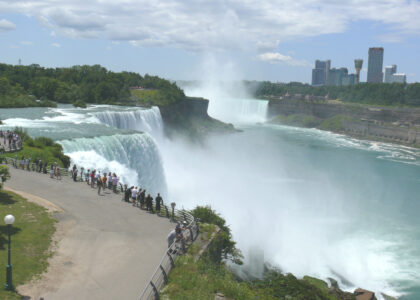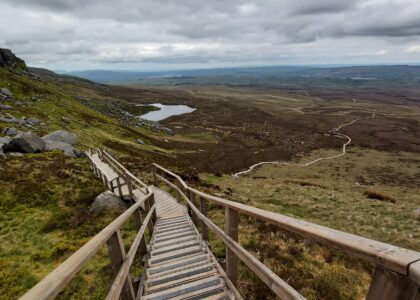Welcome to the majestic Towering Cliffs of Zion’s Great White Throne, an awe-inspiring landmark nestled within Zion National Park in Utah. As you approach these cliffs, take a moment to imagine the geological forces that shaped this magnificent landscape over millions of years. Rising to an impressive height of over 2,300 feet, the Great White Throne is one of the park’s most iconic features, renowned for its striking white Navajo sandstone that gleams in the sunlight.
The history of the Great White Throne and Zion National Park is both rich and fascinating. The land we see today was once a seabed, with layers of sediment accumulating over time. As the tectonic plates shifted and the region uplifted, these layers were carved by wind, water, and ice, creating the dramatic cliffs and canyons we see now.
Zion’s history with human inhabitants dates back thousands of years. The Ancestral Puebloans, also known as the Anasazi, were among the first to call this area home. They were followed by the Southern Paiute people, who have lived here for centuries and continue to have a profound connection to the land. These early inhabitants left behind petroglyphs and other archaeological evidence of their presence, offering a glimpse into their lives and spiritual practices.
In the late 19th century, European settlers arrived, drawn by the fertile land and stunning scenery. Among them was Nephi Johnson, a Mormon pioneer who first explored Zion Canyon in 1858. His accounts of the canyon’s beauty drew more settlers and visitors, leading to the establishment of Zion National Park in 1919. The name ‘Zion’ itself, given by Mormon settlers, reflects the sacred nature they attributed to this place, symbolizing refuge and sanctuary.
One of the most famous figures associated with Zion is Frederick Vining Fisher, a Methodist minister who, in 1916, named many of the park’s features, including the Great White Throne. His poetic names have endured, capturing the imagination of visitors and adding to the park’s mystique.
Over the years, Zion National Park has played a significant role in the broader context of American conservation efforts. It was one of the first national parks established in the United States, highlighting the early 20th-century movement to preserve America’s natural wonders for future generations.
Today, the Great White Throne stands as a testament to nature’s power and beauty. Visitors from around the world come to hike its trails, photograph its vistas, and experience the awe-inspiring grandeur of Zion. The park continues to be a place of reflection, adventure, and inspiration, reminding us of the timeless connection between humans and the natural world.
As you stand before the Great White Throne, consider the countless stories and histories intertwined with this land. It’s not just a geological marvel but a living tapestry of human and natural history, waiting to be explored and appreciated.





